What to Do If Someone Hits Your Car
Motor vehicle accidents remain prevalent in Australia, with over 1,200 fatalities and over 40,000 injured/hospitalised every year.
Getting hit by another vehicle can be traumatising, especially if it is a hit and run accident. If it happens to you, you want to make sure you know what to do so that you are not scrambling if you end up having a dispute with an insurance company or have to take the matter to court.
Here is how you cover your bases if someone hits your car.
If the Other Driver Remains at the Scene
Health and safety are always the most important considerations, so stay calm and assess any injuries that may have occurred during the car crash. If someone has been injured, you must report the crash to the Insurance Commission of WA.
Make sure anyone who needs emergency medical attention gets it and contact emergency services. If possible, drivers should move their cars off the road and turn on their hazard lights. If moving the car could cause further damage, drivers should leave their parked car where it is.
If there is too much damage at the crash site or it is otherwise unsafe to move the vehicle involved, you should call roadside assistance and the police to assist.
Collect Evidence at The Scene of The Car Accident
After that, your priority will be on preserving potential evidence, documenting the damage to your car and getting the relevant information from all the parties involved, such as details of the other driver’s insurer and vehicle registration number.
Exchange information with the other driver.
Exchange details with the other driver or person involved, ensuring you get as much detail and information about the other driver’s insurance company, the vehicles involved and their contact information.
Get the other drivers licence number, name, address and contact details. Ask to see their car registration and insurance details, write down their insurance number and policy details, as well as other information such as their vehicle registration number.
If the other party refuses to provide you this information, does not have comprehensive car insurance, or leaves the scene of the car crash, contact police.
Take pictures of the cars and the car accident scene.
Ideally, you should take pictures from a few different angles prior to moving any vehicles.
These images will be very useful when you contact car insurance providers to make an insurance claim as they will not only depict the damage done to your car, the damage done to other vehicles and any other property damage, but can also provide information about how the accident occurred.
Check for witnesses.
Third-party witnesses can provide important information about the circumstances of the accident, especially if the parties dispute the facts and there is serious damage to your vehicle.
If someone hits your car, canvass bystanders to find out if anyone saw what happened or can identify the drivers involved. Get names and contact information from everyone who witnessed the accident, as they may be contacted for further information if you decide to make a claim.
Contact the police.
Call the police at the scene if:
- someone is injured or trapped (after calling the ambulance first), sustained bodily harm or was killed;
- the other driver flees the scene;
- the crash involved uninsured drivers or the driver doesn’t have comprehensive car insurance;
- the other driver is or seems to be intoxicated;
- the cars are blocking the road/traffic but can’t be moved; or
- the collision has resulted in road hazards (debris, property damage, leaking fluids)
Report to the police as soon as you can within 24 hours of the collision if:
- the damage is $3,000 or more;
- the other driver refuses to exchange information such as details for their car insurance provider;
- one or more of the cars was towed away by a tow truck; or
- the police didn’t attend the scene of the crash.
Police reports are vital evidentiary support for car insurance claims and lawsuits. When you make a police report of the crash, or the police take information at the scene and generate a report, it should contain:
- your personal details, such as identification and contact information
- your driver’s licence and vehicle registration information
- details of the crash, including exact location, date, and time
- personal details and vehicle information of the other people involved
You can make the report online if:
- no one was killed or injured
- the parties exchanged the necessary information (so it was not a hit and run)
- no vehicles were towed
- no police vehicles were involved
- the police did not attend the scene
- the total damage was estimated to be less than $3,000
- you don’t want a police investigation of the accident
Contact your car insurance company.
Unless your car insurance policy provides a timeline for reporting, there is usually no specific deadline to report the crash to your insurance company.
Many insurers recommend it is best to do so as soon as possible so they can start working on your claim. People tend to provide more accurate and detailed information when something is still fresh in their minds.
You need to provide the necessary information you have gathered about the other driver and witnesses to your insurance provider, such as the vehicle registration number or the driver’s insurer details, as well as a police report number if you have one.
If you can provide this information and prove the other driver was completely at fault, you typically won’t need to pay an excess when making an insurance claim. Some insurance policies also include a hire car, in the event you are unable to drive your car due to the damage sustained.
Does my level of insurance impact what I can claim?
Your level of insurance will determine what is covered when you make a claim. Third Party Insurance covers damage to the other party’s vehicle or property, but not your own. Comprehensive car insurance usually covers you for all types of damage and vehicle repair costs after a car accident, regardless of whether you were at fault or not.
How do I find out what my third party or comprehensive car insurance policy covers?
Make sure to check your insurance policy online to find out what you are covered for and if you’ll be required to pay an excess. You’ll also be able to determine if your insurance premium will increase when you make a claim.
Contact a motor vehicle accident lawyer.
This is a must if you have been injured in a car accident and are not at fault. A car accident lawyer will know if and what kind of medical attention you should seek to determine the extent of present and potential future injuries based on your own circumstances.
They will also be able to help investigate and gather evidence to help you in your insurance claim or if the matter proceeds to court. Their job is to make sure that your legal rights are protected and preserved and that you take all the necessary steps so you can get all the compensation to which you are entitled to. They’ll also make sure your injury claim is processed or adjudicated fairly.
A motor vehicle accident lawyer will also know the filing deadlines — not only related to accident lawsuits but also for compulsory third-party (CTP) insurance claims for personal injury. They will be able to advise you on the best course of action when making a claim for compensation.
But What If It’s a Hit-and-Run Accident?
Apart from the exchange of driver information, the steps are the same for a hit and run accident.
After you’ve made sure no one needs emergency medical attention, call the police. It is a crime not to remain at the scene of a car accident because you have a legal responsibility to help anyone who might be injured, exchange the necessary information with the other driver or owner of the property that was damaged, and report the accident to police if they don’t attend the scene — regardless of whose fault it is.
If you leave the scene of a vehicle accident, you could be charged with a criminal offence for failing to stop after an accident, render assistance, exchange names and addresses, and/or report the accident to the police.
Try to identify the other driver in the hit and run.
Take as many pictures as you can of the other car — ideally, capture the licence plate — so that you have a visual record of the colour, make, and model of the car. Write down all the details you can remember as early as possible so that they are fresh in your mind. Canvass witnesses.
Not only may they corroborate your version of events, but someone may have been able to get a good look at the other car and/or driver as well. Hopefully, between all of you, there will be enough information for the identification of the hit and run driver.
Make a Nominal Defendant claim if you are injured.
If the driver who caused the accident cannot be identified, and you have suffered personal injury, you can still make an insurance claim directly to the Insurance Commission of Western Australia.
You will be assigned a CTP insurer who will manage your claim.
To qualify, the other/unidentified driver’s fault needs to be established. You and/or your legal representative should provide the insurer with the results of your “due search and enquiry”, showing that you have taken reasonable steps to identify the other vehicle.
This is another reason for canvassing witnesses and consulting the police. Photos may also be helpful because what the accident scene looks like and the placement of damage to your car may be evidence to support that the other driver caused the crash.
Other things you can do include searching for surveillance cameras in the area — they may have captured the collision — and putting up public notices about the accident asking for witnesses to come forward.
A Motor Vehicle Accident Lawyer Can Help
The stakes may be high after a car accident, especially if you have been injured or involved in a hit and run accident.
Consulting a motor vehicle accident lawyer is always recommended so you can understand what options are open to you and to understand the general nature of compensation claims.
If you plan to make a claim for compensation, motor vehicle accident lawyers will help you through every step of the claim process. They are there to protect your rights, make sure you know and receive the compensation to which you are entitled and commence legal proceedings if required.
If you have been involved in a car accident or a hit and run accident and require assistance in making a claim for compensation, contact the expert motor vehicle accident lawyers Bradford Legal based in Perth, Western Australia.


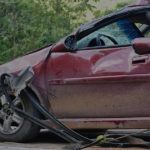
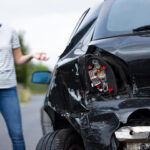
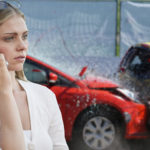
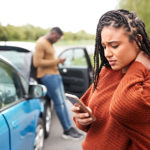
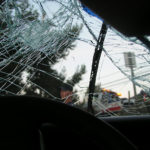


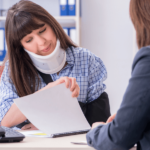
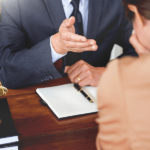
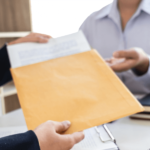


You must be logged in to post a comment.